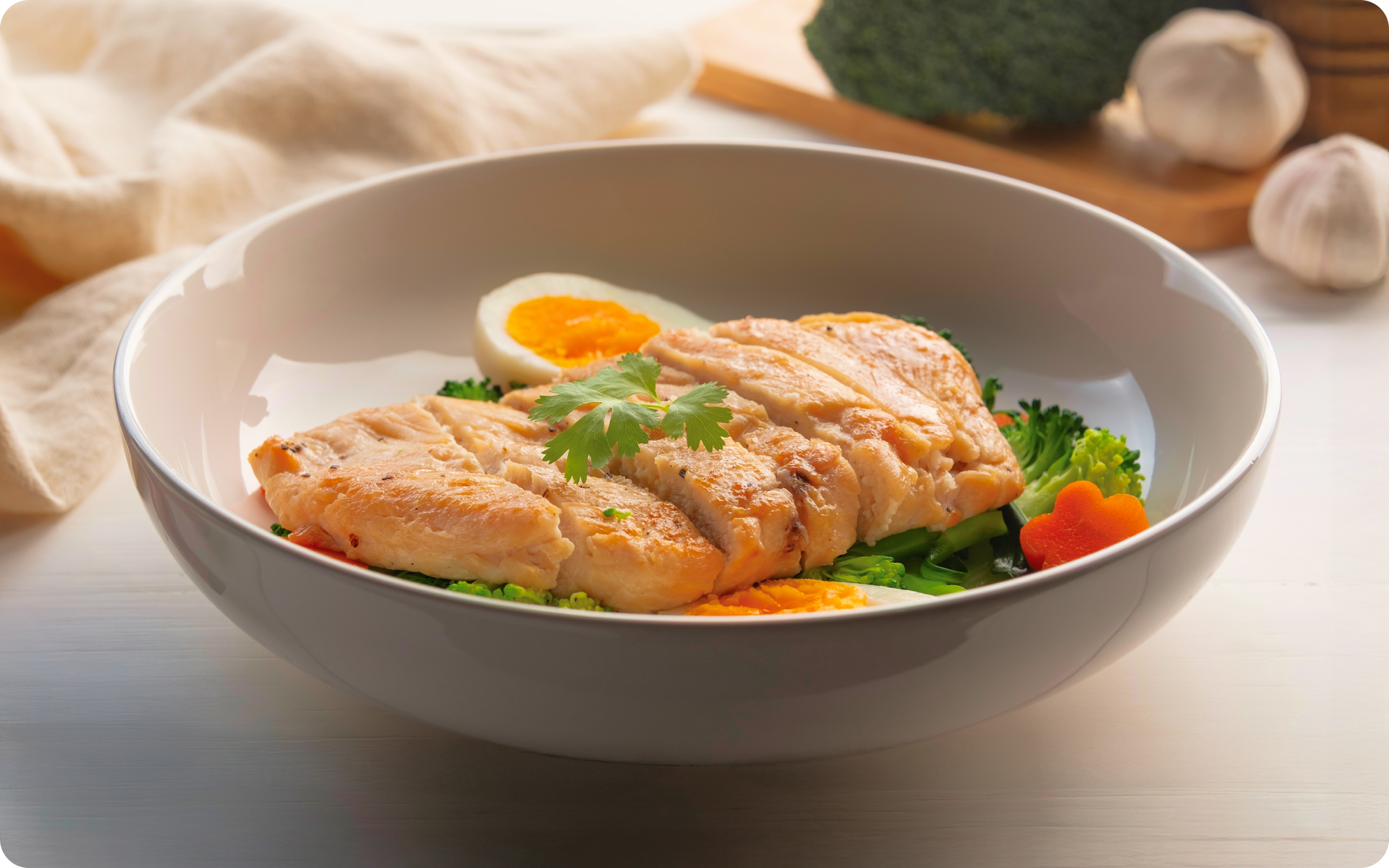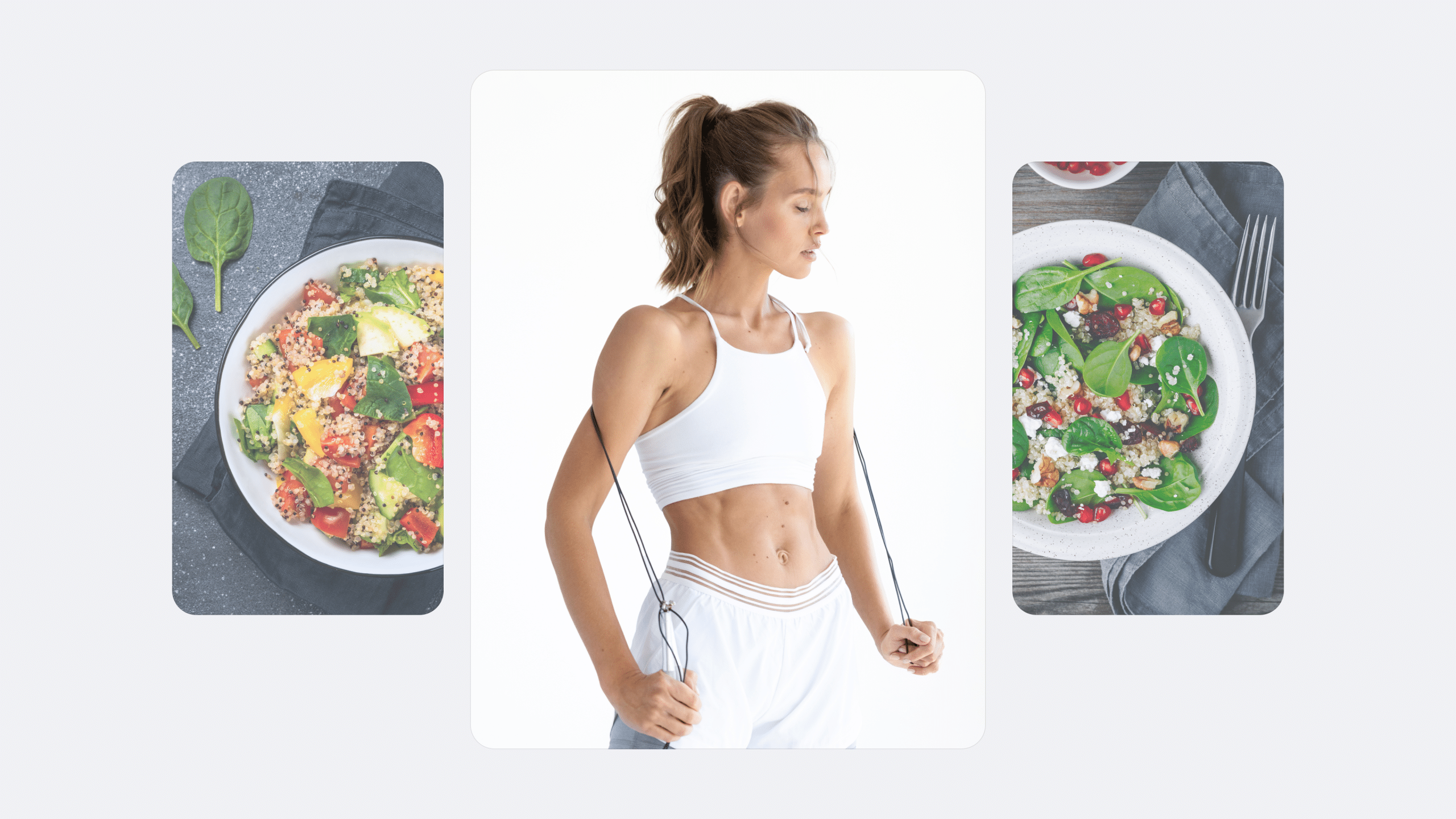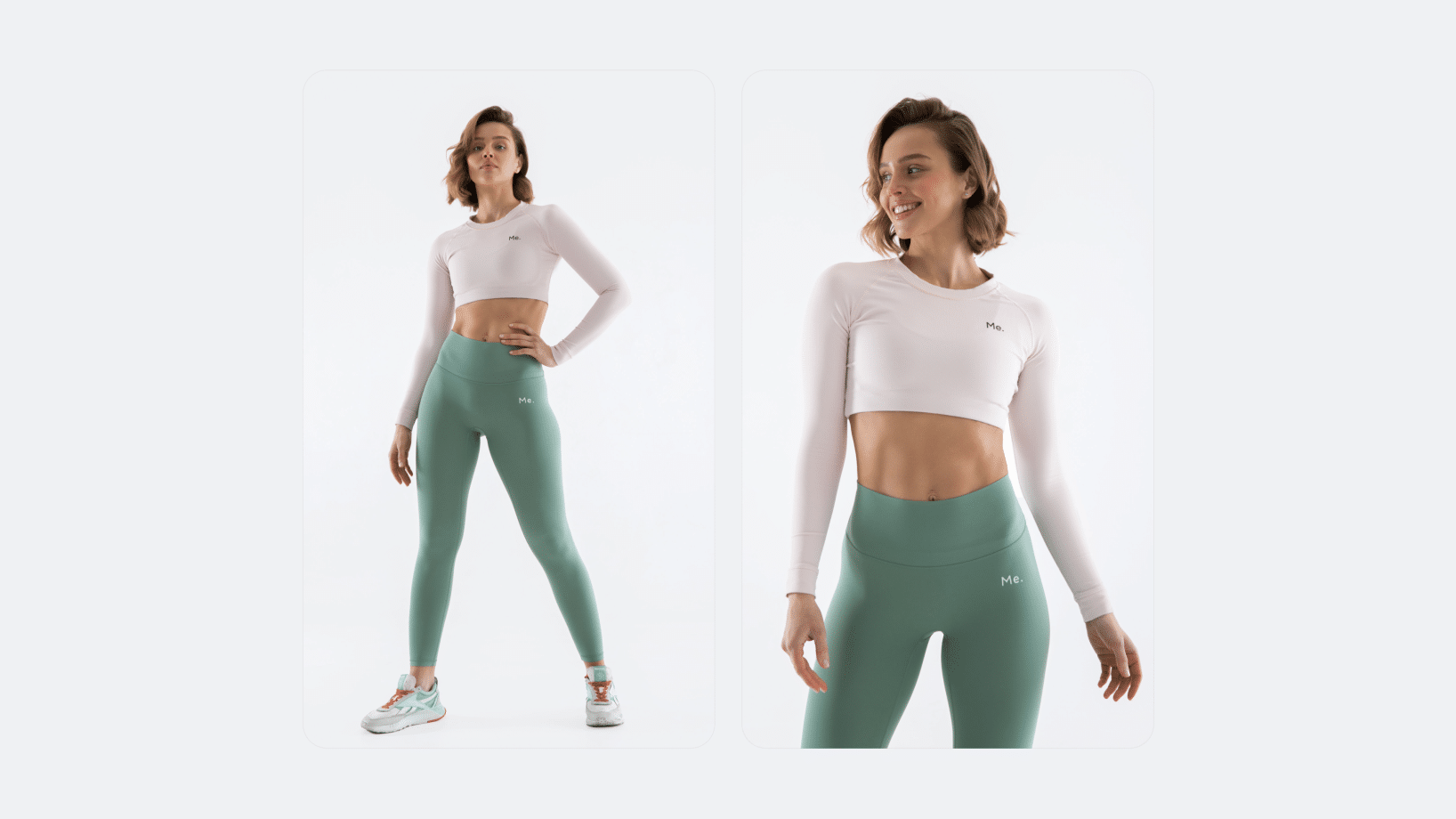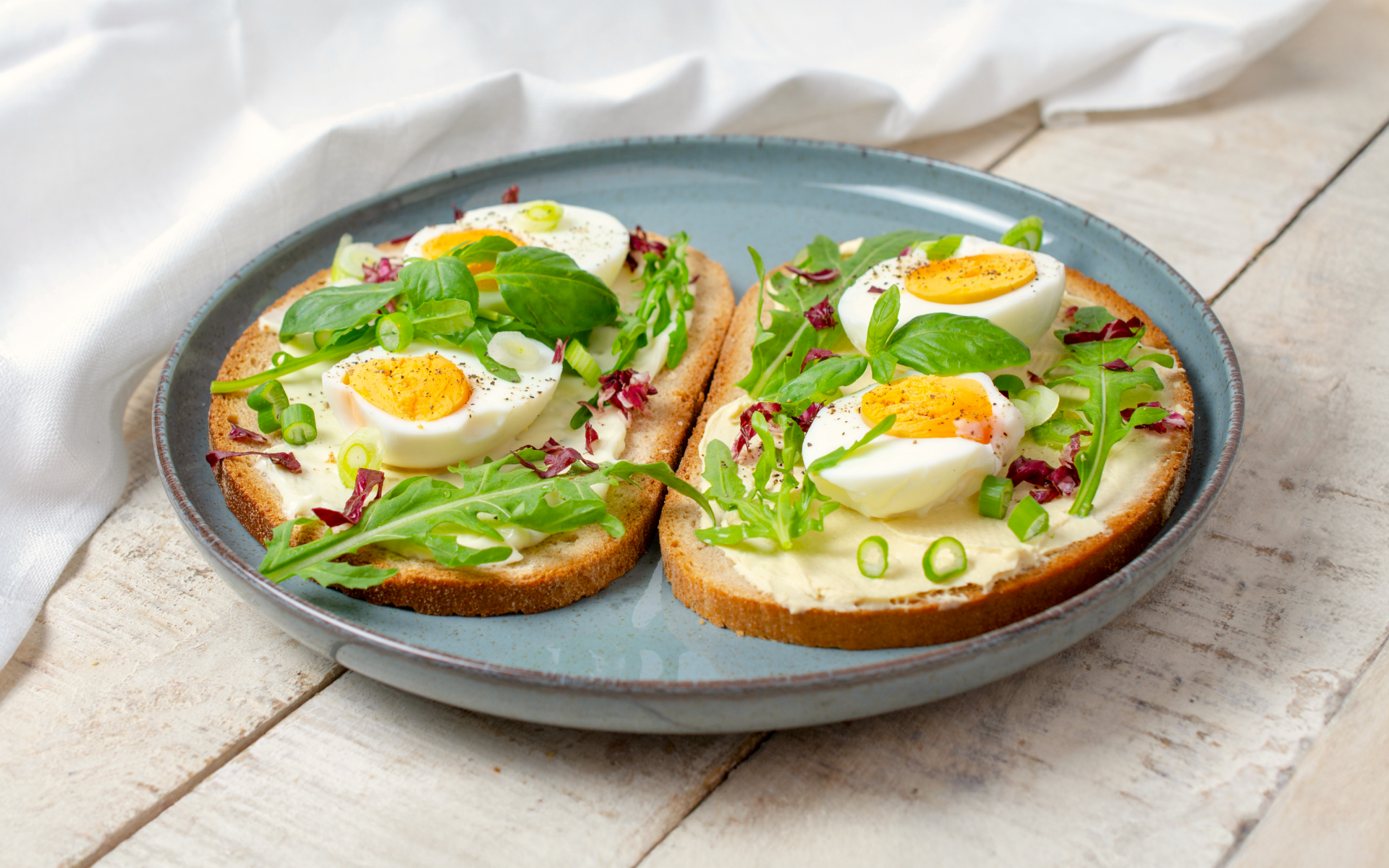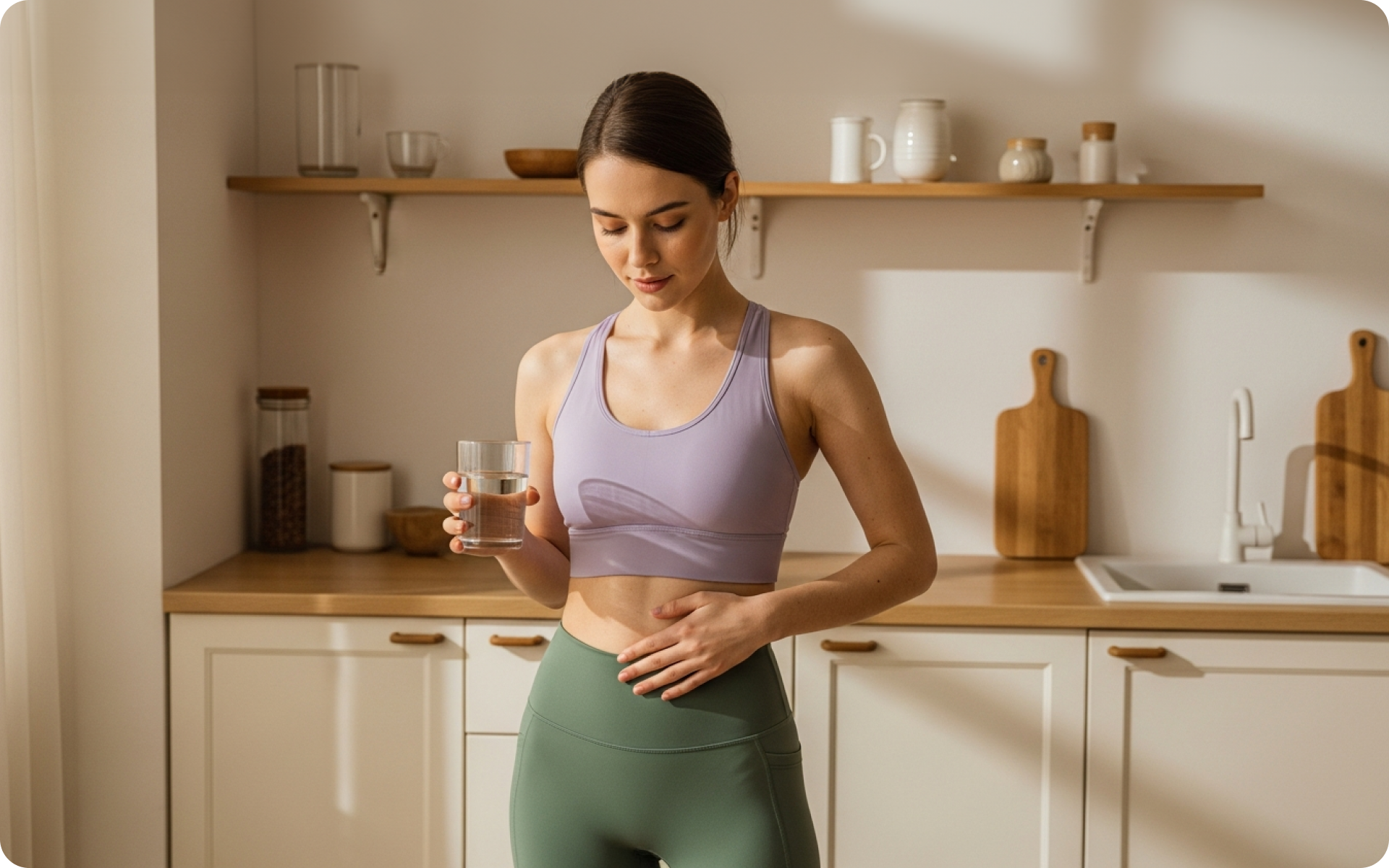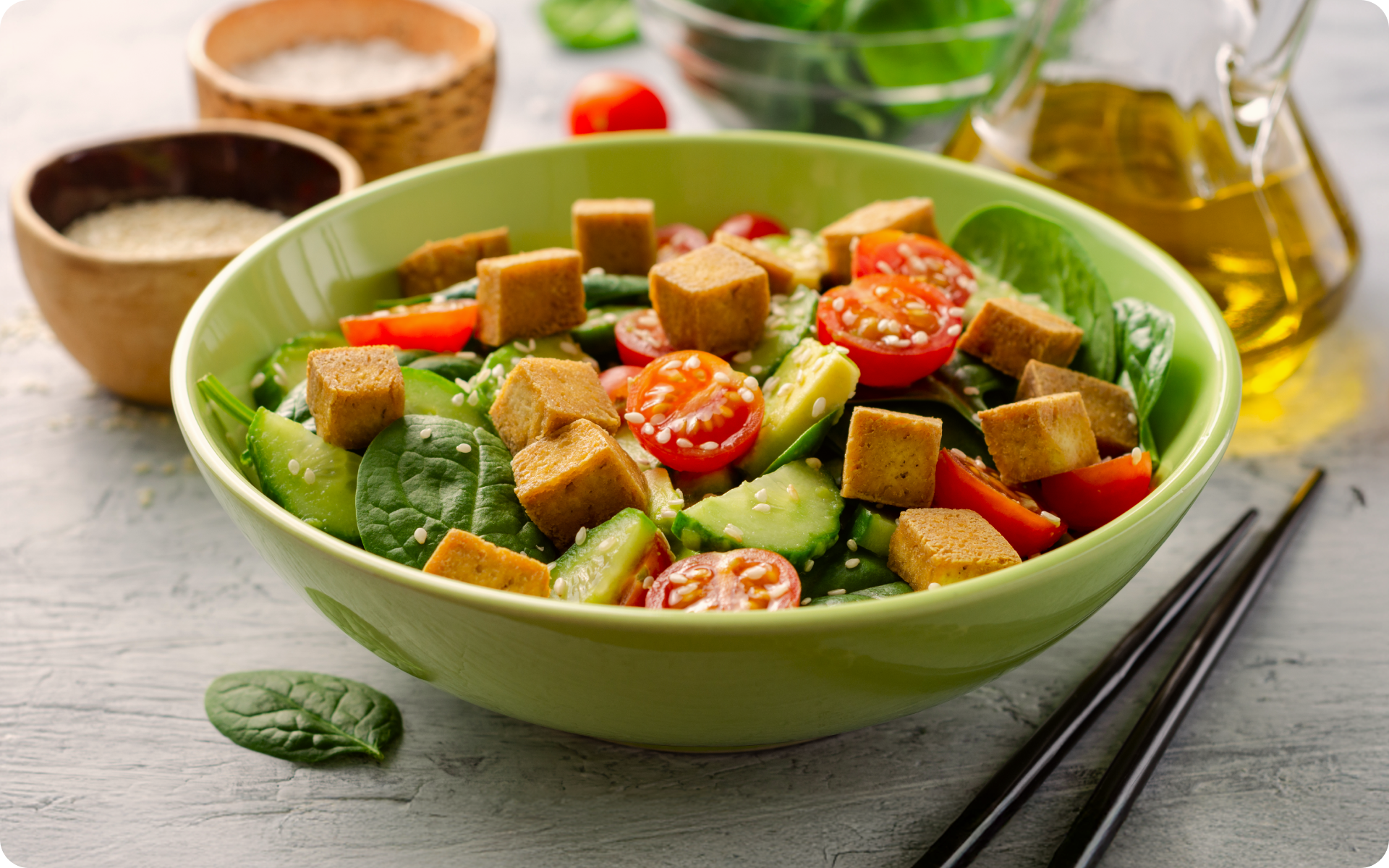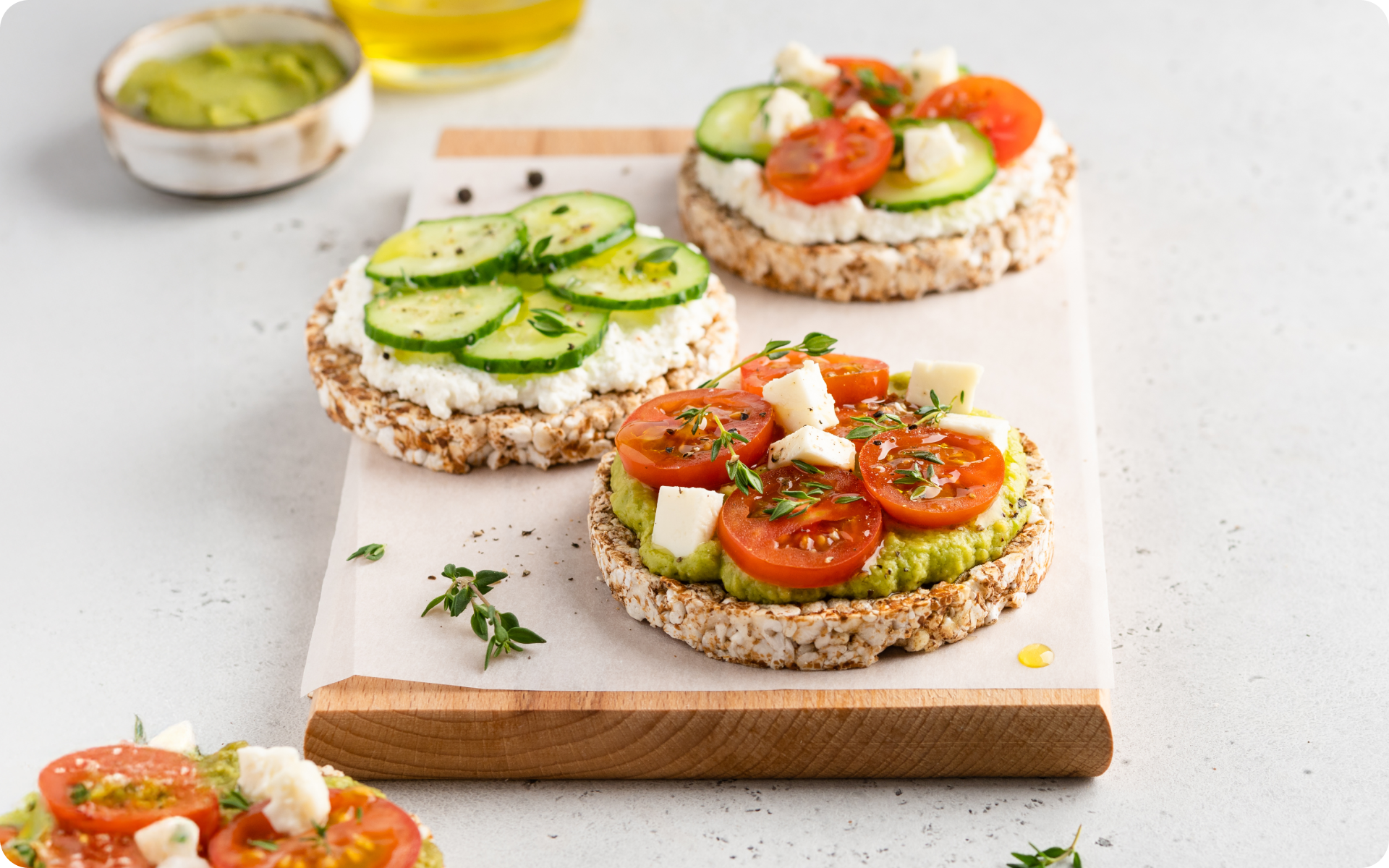One of the most common questions people have when they are trying to lose weight is “How do I go about doing it?” You can try many different diets to see which one works best for you. However, not every diet works well and some may even have an adverse effect on your health.
The chicken and broccoli diet is a diet that has been circulating the internet as a way of helping people lose weight, supposedly without having any adverse effects on their health. This article will discuss what this diet entails, its pros and cons, and if it’s worth trying or not.
What Is the Chicken and Broccoli Diet?
To lose weight, you must be committed to following a diet plan that decreases caloric intake and consists of nutritional foods (11). With the chicken and broccoli diet, you will consume approximately 1,100 calories per day. Not only is this a low amount of calories, but they mostly come from lean proteins and vegetables, with very few carbohydrates.
An alternative to this is the chicken, brown rice, and broccoli diet. Here, you will consume approximately 1,200 calories, mostly from lean proteins and vegetables and a few more carbohydrates than the chicken and broccoli diet.
Can You Lose Weight by Just Eating Chicken and Broccoli?
Yes, you can lose weight by just eating chicken and broccoli, as long as you control your portions.
Eating just enough chicken and broccoli to maintain a calorie deficit (consuming fewer calories than you burn) will result in weight loss.
However, eating too much chicken and broccoli to the point that you exceed your daily caloric requirement can hinder weight loss.
BetterMe App helps you achieve your body goals with ease and efficiency by helping to choose proper meal plans and effective workouts. Start using our app and you will see good results in a short time.
What Do You Eat on the Chicken and Broccoli Diet Plan?
The chicken and broccoli diet typically consists of a shorter 10-14-day plan.
On the first day, you eat broccoli and drink unsweetened black tea for breakfast, consume a grilled chicken breast with steamed vegetables such as broccoli or spinach for lunch, and enjoy another grilled chicken breast with more steamed vegetables for dinner.
This cycle continues throughout the entire diet plan. Both chicken and broccoli offer essential nutrition.
Chicken Breast (100 grams) (7):
- Calories (143 kcal)
- Protein (24 g)
- Fat (3.12 g)
- Carbohydrates (2.68 g)
- Notable vitamins – Vitamin B 6 (30% of daily value)
Broccoli (1 cup/ 90 grams) (5):
- Calories (30.9 kcal)
- Water (89%)
- Protein (2.57 g)
- Fat (0.34 g)
- Carbohydrates (6 g)
- Notable vitamins and minerals: Vitamin C (90%), vitamin A (19%), vitamin K (77%), folate (14%), magnesium, phosphorous, potassium, and iron (4-6%)
Does the Chicken Breast and Broccoli Diet Work?
On this diet, your caloric intake is incredibly low, which will lead to weight loss in almost anyone who follows it. However, many people will notice that they lose water weight due to a lack of calories rather than losing fat mass. Therefore, when they return to their normal eating habits, they will most likely regain the weight they lost.
Pros of the Chicken and Broccoli Diet
Benefits of the chicken and broccoli diet include:
Low in Calories
The chicken and broccoli diet is a great way of limiting your caloric intake. Consuming 1,100 calories a day will create a daily calorie deficit of 500-1,000, which may help you lose 1-2 pounds per week if your maintenance calorie needs are 1,600-2,100 (16).
High Amount of Protein
This type of diet plan consists mostly of lean proteins, which are high in the essential amino acids our bodies need (12).
Rich in Vitamins and Minerals
Grilled chicken, steamed vegetables, and unsweetened black teas all provide your body with different types of vitamins and minerals it needs to function properly while also helping you lose weight and stay healthy.
Easy to Follow
One thing many diets lack is simplicity. This type of meal pattern is easy to follow and simple to prepare.
Read more: How To Lose 3 Pounds a Week According To Experts
Cons of the Chicken and Broccoli Diet
There are also several cons to this diet:
Leaves out Essential Nutrients
By only eating 1,100 calories a day and eating a limited variety of foods, you may deprive your body of the essential nutrients it needs to function properly. This leaves you at risk for nutrient deficiencies.
Monotonous
Eating the same foods over and over again can become tedious after a while. This may ultimately lead to cravings for different types of food, potentially making it more difficult for you to stick to this type of meal pattern.
Temporary Weight Loss
Most people who lose weight on this type of diet plan experience temporary weight loss. When they revert to their normal eating habits, they will most likely regain most, if not all, of the weight that was lost (14).
Low Energy
If you constantly consume low amounts of calories throughout the day, your energy levels may also be very low. You won’t have enough energy to exercise or do much else apart from going about your daily life, and this will ultimately make you feel exhausted.
Can Lead to Disordered Eating Patterns
When people constantly deny themselves the foods they want, this can lead them to develop disordered eating patterns over time, such as binge eating disorder or anorexia nervosa (8).
For any restrictive meal pattern to be safe, it must be done in moderation and only for a short period. Some people may also require medical supervision, so you should discuss your diet plans with your doctor before you start.
Healthy Alternatives to the Chicken, Rice, and Broccoli Diet
There are healthy alternatives to the original chicken, rice, and broccoli diet, so you can continue to enjoy these three ingredients without becoming bored or hungry enough to cheat on your diet.
Here are some healthy alternatives to the chicken, rice, and broccoli diet:
Moderate Calorie Reduction
By reducing your calorie intake a little, you are less likely to slow down your metabolism, which tends to happen with more dramatic calorie restriction. Therefore, reducing your daily caloric intake by 250–500 calories is ideal for better results (13). This could mean that instead of eating three meals per day, you eat five or six smaller meals or snacks throughout the day.
Balanced Meals
A balanced meal with protein, carbohydrates, and fat is what your body requires to function properly. Carbohydrates provide glucose (energy) our bodies need, while proteins help repair muscles, and fats have many functions.
Variety
Varying your meals every day will make it easier to stick to your diet. It will also encourage the consumption of different kinds of foods that are more helpful for losing weight than just sticking to the seven-day chicken and broccoli diet all year round. This doesn’t mean that you should only eat salads or drink juice for a week.
You can vary your daily meals with simple easy recipes (2) while still including the three main sources of lean protein, complex carbohydrates, and healthy fat.
Occasionally Indulging in Treats
By allowing yourself a cheat meal every week or so, you won’t feel deprived on your diet plan and may even enjoy it more than before.
Although it may seem difficult, you must remind yourself that a cheat meal is just that – a treat in moderation. You can eat your favorite food or even junk food, but only in small portions.
Lifting More Weights
Lifting weights is a great way of speeding up your metabolism and losing weight (9). By lifting weights that are challenging for you, you can tone and define your muscles, which decreases body fat and increases muscle mass, adding up to weight loss.
Doing Cardio Frequently
Cardio helps burn calories while also improving your cardiovascular health. It should be done at least three times per week as it makes a significant contribution to burning more calories than strength training alone (3).
You can choose activities such as running or walking depending on your abilities. However, we highly recommend running as this exercise builds endurance faster than any other form of cardio.
BetterMe is your fast-track ticket to a long-lasting weight loss! Tailor your fitness journey and maximize your results with just a couple of swipes!
Chicken and Broccoli Diet Recipes and Meal Ideas
It’s important to keep in mind that you don’t need to follow the original chicken, rice, and broccoli diet. You can change it up a little, include other types of foods, and explore other recipes (1).
Here are some healthy recipes that use these three ingredients:
Creamy Chicken and Broccoli Pasta
If you want to go for a pasta dish, this one has approximately 476 calories per serving.
Ingredients:
- 500 g (1 lb) boneless chicken thighs chopped into bite-size pieces
- 2 tbsp butter
- 3 garlic cloves crushed/minced
- 1 cup heavy/whipping cream
- 1 tsp dried thyme
- 2-3 cups broccoli sliced into small florets
- 3/4 cup parmesan cheese grated
- 1 tsp lemon juice
- Salt and pepper to taste
- 500 g (1 lb) cooked pasta + 1 cup cooking water
Instructions:
- Bring a large pan to high heat.
- Pour a few teaspoons of olive oil over the chicken and sprinkle with salt and pepper.
- Wait until the chicken turns brown in a pan over medium-high heat for 2 minutes, or until it is golden brown on all sides. Remove it from the pan and set it aside.
- Add the butter and garlic and cook for 30 seconds.
- Combine the cream, thyme, and lemon juice in a saucepan. Bring to the boil over a medium-high heat, then add the chicken and broccoli. Cover partially and simmer for 5-7 minutes until the chicken is cooked through.
- Stir in the parmesan and simmer for five minutes. Season with salt and pepper.
- Add the pasta to the pan and some of the reserved cooking water if necessary. The cream sauce should be well-coated with the pasta.
- Serve immediately.
Chicken and Broccoli Soup (10)
If you want to remove the carbs from your dinner, then this soup is for you. It’s a quick and simple recipe that will give you a delicious meal without you needing to spend too much time in the kitchen. The amount of calories in one serving of this recipe is also suitable for a healthy breakfast or lunch.
Ingredients:
- 1-2 tbsp olive oil or butter
- 1 onion, finely chopped
- 3 cloves garlic, minced or crushed
- 8 oz mushrooms, sliced/chopped into bite-size pieces
- ½ tsp dried thyme leaves
- 4 cups low-sodium vegetable broth (or water) + 2 cups filtered water for the chicken base
- 6 oz cooked chicken, shredded or cut into small cubes
- 4 cups broccoli florets roughly chopped into bite-size pieces (you can also use cauliflower if you prefer)
- ¼ cup grated parmesan cheese, plus extra for the top of each serving if desired
- Pepper to taste
Instructions
- Heat the oil or butter in a soup pot over medium heat. Add the onion and garlic and cook until softened (approximately five minutes). Stir in the mushrooms, thyme, and broth (or water) and bring to the boil. Reduce the heat, add two cups of filtered water, and simmer for approximately 15 minutes. Remove from the heat.
- Add the chicken, broccoli, and cheese. Stir until the cheese has melted and combined with the other ingredients. Season with pepper if desired (salt may not be necessary due to the saltiness of parmesan cheese). Divide into four bowls and serve immediately while hot.
This recipe is courtesy of iheartthenewme.com.
Read more: Do 5-Day Liquid Diets Work? Everything You Need To Know About This Viral Fitness Strategy
Chicken and Broccoli Stir-Fry (15)
If you want to cook your chicken and broccoli, this stir fry is the dish for you. It’s quick, simple, and will provide you with a delicious meal in just 30 minutes.
Ingredients:
- 2 tbsp soy sauce
- 1/4 cup green peas (optional)
- 2-3 boneless chicken thighs, chopped into bite-size pieces
- 2 cups broccoli florets
- 1 tbsp cornstarch or tapioca flour
- 3 green onions, sliced into small rounds
Instructions:
- Whisk together the soy sauce, cornstarch/tapioca flour, and ¼ cup water. Set aside. Heat oil in a large non-stick pan over medium heat.
- Add the chicken to the pan and cook for approximately four minutes until it is brown. Stir constantly to ensure even cooking.
- Remove the chicken from the pan and set it aside. Add a little more oil if needed, then add the broccoli and green peas (if using) and cook on high heat until the broccoli is tender-crisp (approximately five minutes).
- Return the chicken to the pan and stir in the sauce to evenly coat everything. Let it cook for approximately three minutes or until the sauce thickens to your liking.
- Serve immediately over rice if desired and garnish with green onions.
This recipe is courtesy of iheartthenewme.com.
FAQs
What if I eat only chicken for a month?
If you eat only chicken for a month, you will most likely be deficient in essential nutrients and vitamins. This can have negative health consequences including fatigue, hair loss, and a weakened immune system. A balanced diet that includes various sources of protein, carbohydrates, fats, and micronutrients is very important.
Is it OK to eat chicken and broccoli every day?
Yes, it’s okay to eat chicken and broccoli every day, as long as you also eat other nutritious foods and maintain a balanced diet. Variety is important to ensure your body receives all the essential nutrients it needs to function properly.
Are chicken and broccoli high in calories?
Not really. In comparison to other foods, chicken and broccoli are low in calories.
A 100-gram serving of cooked chicken breast contains approximately 158 calories (6), while a cup of cooked broccoli has approximately 44 calories (4). However, the method you use to prepare these foods can significantly alter their calorie content. For example, frying chicken and using a creamy broccoli sauce can significantly increase the calorie count.
Sauces, oils, and cooking methods should be carefully monitored to keep the calorie count in check.
What is the lowest-calorie Chinese food?
The lowest-calorie Chinese food options are generally steamed dishes served with vegetables and lean protein, such as steamed chicken and broccoli.
You should avoid deep-fried options such as sweet and sour chicken or General Tso’s chicken, as they tend to be high in calories due to the added batter and sauce.
Stir-fried dishes that are made with oil and cornstarch can also be high in calories, so it’s best to opt for steamed or lightly sautéed options. Adding extra vegetables and choosing lean protein sources is also a good idea
Will I lose weight if I only eat chicken and vegetables?
Yes, if you eat only chicken and vegetables in smaller portions than usual, you’re likely to lose weight due to the calorie deficit. You can try the chicken and broccoli diet for a month and see if it works for you.
Weight loss comes down to consuming fewer calories than you burn (10), so as long as your overall calorie intake is lower when you eat only chicken and vegetables, you will see weight loss results. However, we advise you to maintain a varied and balanced diet without sole reliance on one food group to ensure you fulfill all your nutrition needs in the long term.
The Bottom Line
The chicken and broccoli diet may be effective for some people as a short-term weight loss solution, but it is not something that should be used as a long-term strategy to improve your overall health.
The best way of losing weight safely is by following a balanced meal plan with proper portion control that includes healthy foods from all the food groups. This will help you maintain your new weight long-term without worrying about any negative effects to your health.
DISCLAIMER:
This article is intended for general informational purposes only and does not serve to address individual circumstances. It is not a substitute for professional advice or help and should not be relied on for making any kind of decision-making. Any action taken as a direct or indirect result of the information in this article is entirely at your own risk and is your sole responsibility.
BetterMe, its content staff, and its medical advisors accept no responsibility for inaccuracies, errors, misstatements, inconsistencies, or omissions and specifically disclaim any liability, loss or risk, personal, professional or otherwise, which may be incurred as a consequence, directly or indirectly, of the use and/or application of any content.
You should always seek the advice of your physician or other qualified health provider with any questions you may have regarding a medical condition or your specific situation. Never disregard professional medical advice or delay seeking it because of BetterMe content. If you suspect or think you may have a medical emergency, call your doctor.
SOURCES:
- 18 Sheet-Pan Mediterranean Diet Dinners for Summer (2023, eatingwell.com)
- 5 Muscle Building Chicken and Rice Dishes to Bolster Lunchtime Gains (2023, menshealth.com)
- Aerobic or Resistance Exercise, or Both, in Dieting Obese Older Adults (2017, nih.gov)
- Broccoli, Chinese, cooked (2022, fdc.nal.usda.gov)
- Broccoli, raw (2019, usda.gov)
- Chicken, broiler or fryers, breast, skinless, boneless, meat only, cooked, braised (2019, fdc.nal.usda.gov)
- Chicken Breast (2019, usda.gov)
- Dietary Restriction Behaviors and Binge Eating in Anorexia Nervosa, Bulimia Nervosa, and Binge Eating Disorder: Trans-diagnostic Examination of the Restraint Model (2015, pubmed.gov)
- Effect of strength training on resting metabolic rate and physical activity: age and gender comparisons (2001, pubmed.gov)
- Fat loss depends on energy deficit only, independently of the method for weight loss (2007, pubmed.ncbi.nlm.nih.gov)
- Fat loss depends on energy deficit only, independently of the method of weight loss (2007, pubmed.gov)
- Protein – Which is Best? (2004, nih.gov)
- Rate of weight loss can be predicted by patient characteristics and intervention strategies (2011, nih.gov)
- Reducing Calorie Intake May Not Help You Lose Body Weight (2017, nih.gov)
- The Chicken and Broccoli Diet (n.d., iheartthenewme.com)
- Weight loss: 6 strategies for success (2019, mayoclinic.org)
